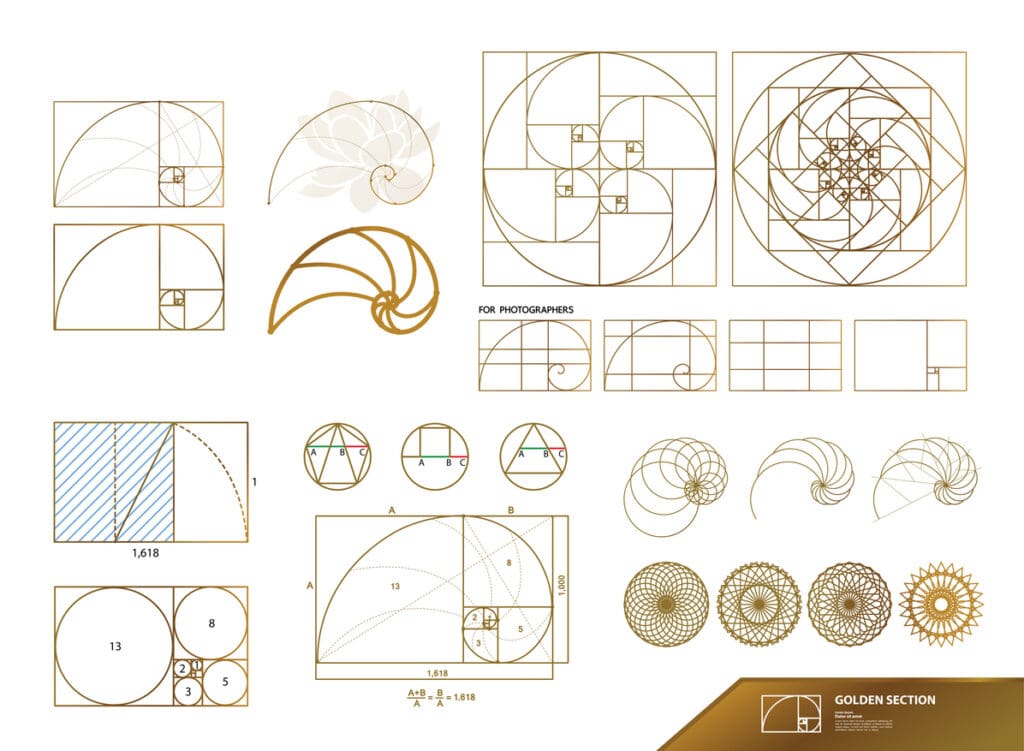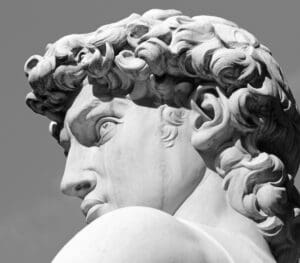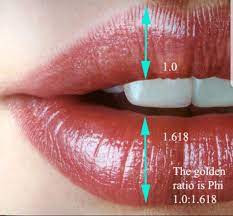
The Golden Ratio and Medical Aesthetics

If you’ve ever marvelled at the precise symmetry of Michelangelo’s David or felt awestruck by the proportioned perfection seen in many of Leonardo da Vinci’s portraits, you’ve glimpsed an artistic rendering of a mathematical phenomenon known as the golden ratio. But this enigmatic number, approximately equal to 1.618, isn’t just a facet of art and nature, it also plays a fascinating role in how we perceive beauty, particularly in faces and an individual’s appeal.

The Golden Ratio and its Application to the Face
The golden ratio, often denoted by the Greek letter Phi (φ), reflects a specific proportion believed to be uniquely appealing to the human eye. It’s observed across disciplines, from the lengths of nautilus shells in nature to the compositions of classical music. Yet perhaps nowhere is its influence more profound than in the portraits and sculptures that have come to define the ideal human form’s aesthetics.
The facial golden ratio, when applied, indicates that certain measurements and proportions contribute to what is typically deemed a beautiful face. In simple terms, the face is divided into various segments, and the ratio between these segments falls within the golden range. For instance, the width of the nose compared to the distance between the eyes is thought to be approximately 1:1.618, according to this aesthetic principle.

Also, when we fill the lips at Facelove Medispa, typically we aim for a ratio of 1 to 1.614 from upper lip to lower lip. Yes, the lower lip should always be bigger. Unless, perhaps you are African, or Asian.
The Legacy from Ancient Times to Modern Analysis
Ancient Origins: Traced back to the Egyptian pyramids and Greek architecture, the concept of divine proportion emerged early in human civilization. It was believed that objects adhering to this ratio were more aesthetically pleasing and derived their beauty from a divine source.
Da Vinci and Later Analysis: The golden ratio’s intersection with human aesthetics was most famously explored by the Italian polymath Leonardo da Vinci. In his work, da Vinci used the ratio as a guiding principle for both artistic and anatomical studies. Since then, its application has evolved significantly, stretching from an artistic curiosity to a template for studies in facial reconstruction and facial analysis in various medical fields.
Ethnicity and Diversity in Facial Appearance
One of the most compelling facets of this subject is its universality—or lack thereof.
While the golden ratio presents a fascinating standard of beauty in many Western cultures, it’s crucial to view facial aesthetics through a lens of global diversity. Notably, norms for facial beauty vary significantly across different cultures and ethnic groups.
In some Asian cultures, for example, features like wider or more rounded eyes are considered beautiful, which do not adhere to the traditional golden ratio. This perspective highlights the importance of context and the need to respect and celebrate the full spectrum of human appearance. Asians tend to dislike a wide cheek bone. It can be said to create bad luck.
Modern Applications: From Mathematics to Aesthetics
In contemporary times, the golden ratio continues to spark interest and debate. In the realm of cosmetic procedures, for instance, practitioners are increasingly using mathematical principles to guide their work, striving to enhance natural beauty without detracting from individual uniqueness. From dermal fillers to facial restructuring surgeries, the phi matrix provides a blueprint for those aiming to achieve or restore facial proportions that are believed to be ideal.
However, like any universal beauty guideline, it’s important to approach the golden ratio as a framework rather than a rule. At Facelove Medispa in St Kilda,Melbourne, we all study aesthetic and understand how to create undetectable results in line with a natural aesthetic. Please don’t come to us if you want to be overfilled.
The beauty of the human face reflects a multitude of factors—genetics, life experiences, and personal preferences—embracing a complex and exhilarating range of expressions.
Conclusion
The golden ratio offers a captivating entry point into the exploration of universal beauty standards and their interaction with facial aesthetics.
Beyond its origins in art and mathematics, its application in facial analysis and cosmetic procedures highlights the enduring human desire for balance and harmony in appearance.
Mike Clague
Aesthetic Nurse, EN BSC MONASH, Anatomy.

No Comments
Leave a Reply
You must be logged in to post a comment.



